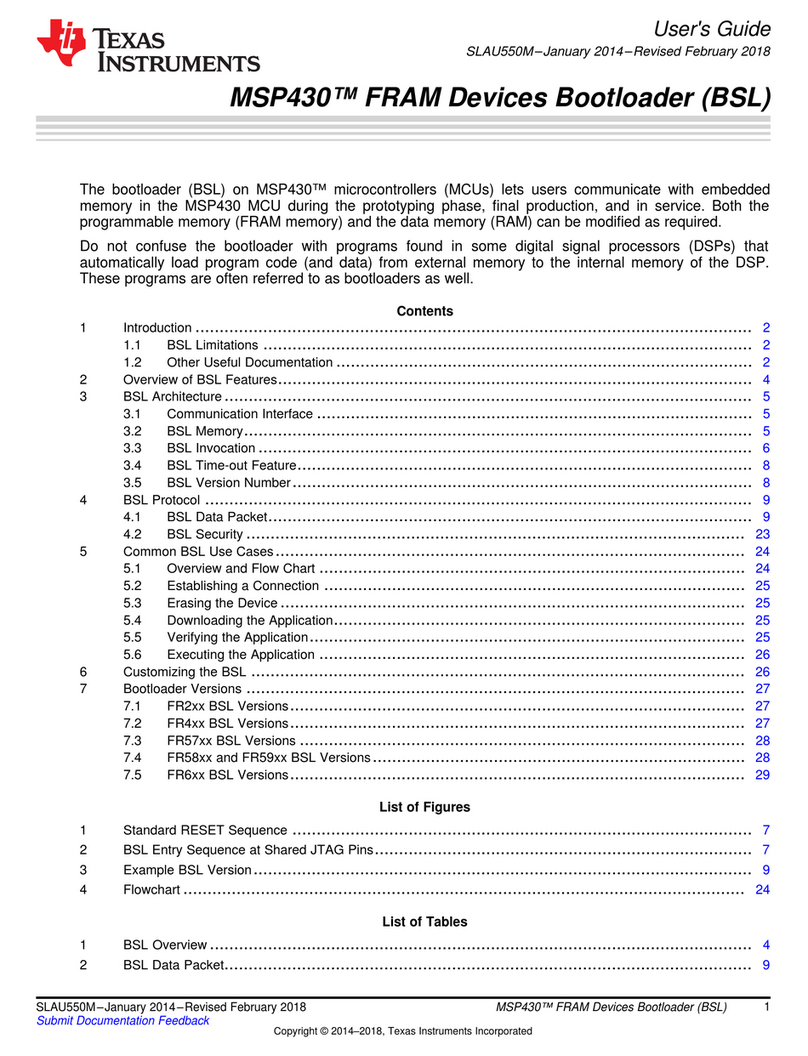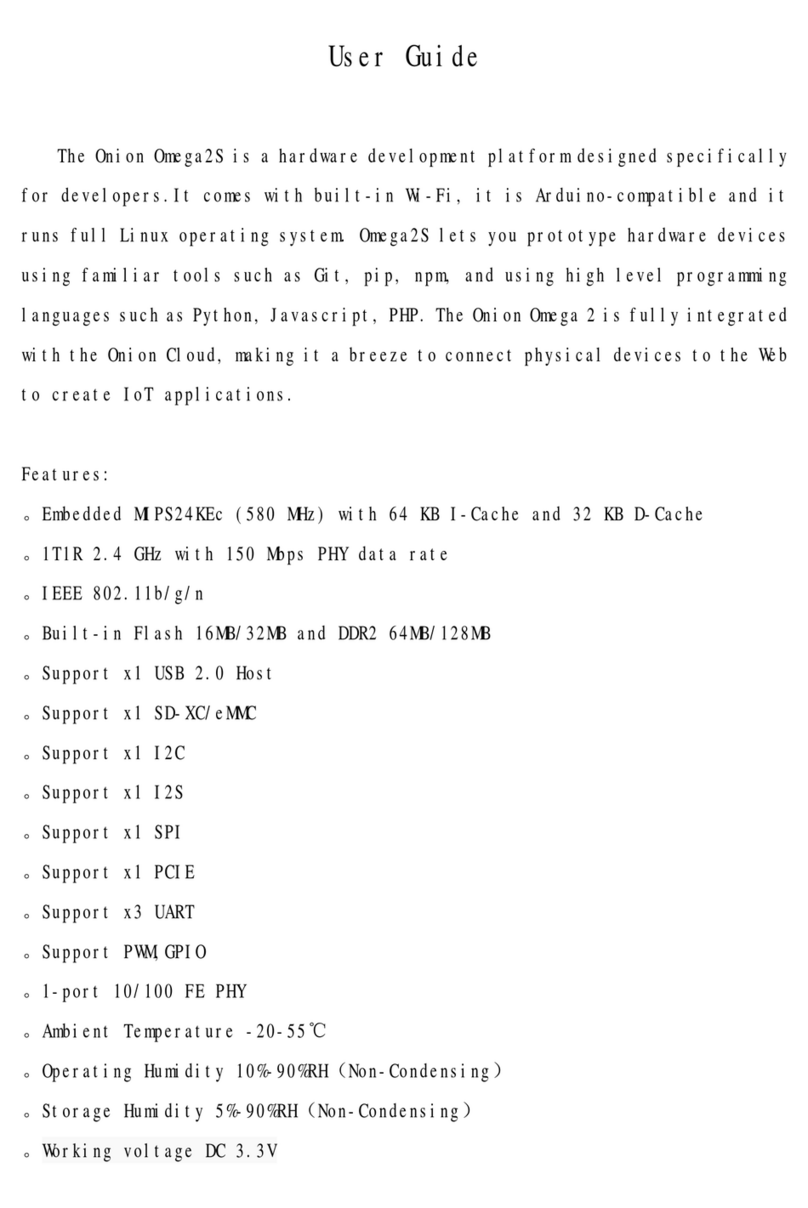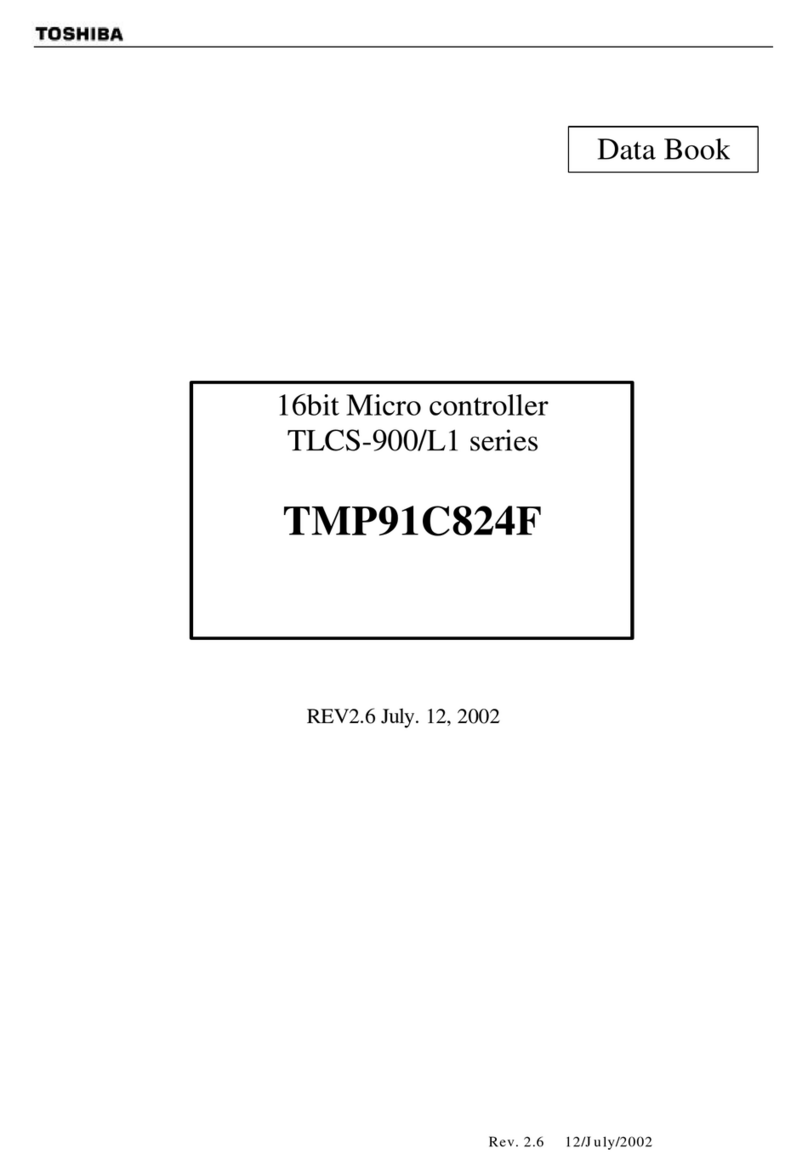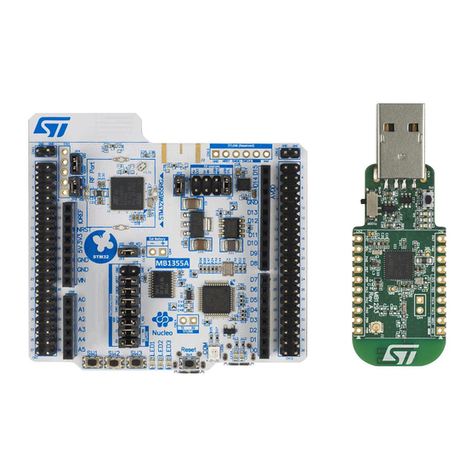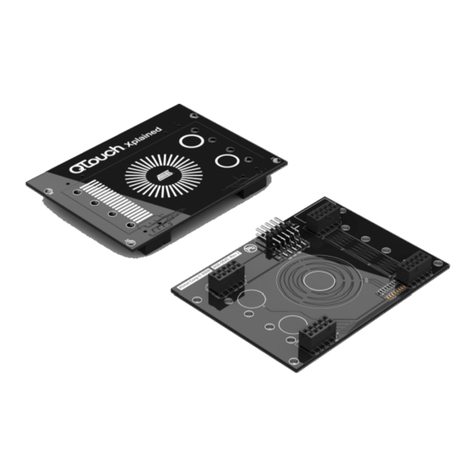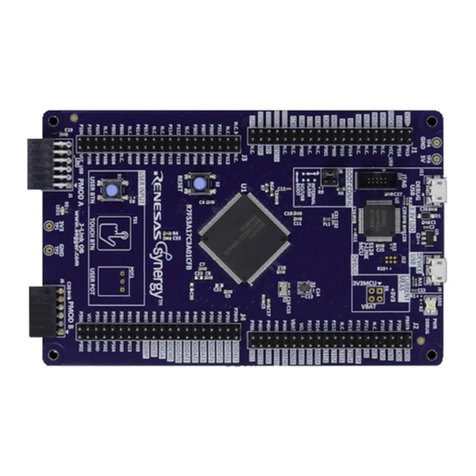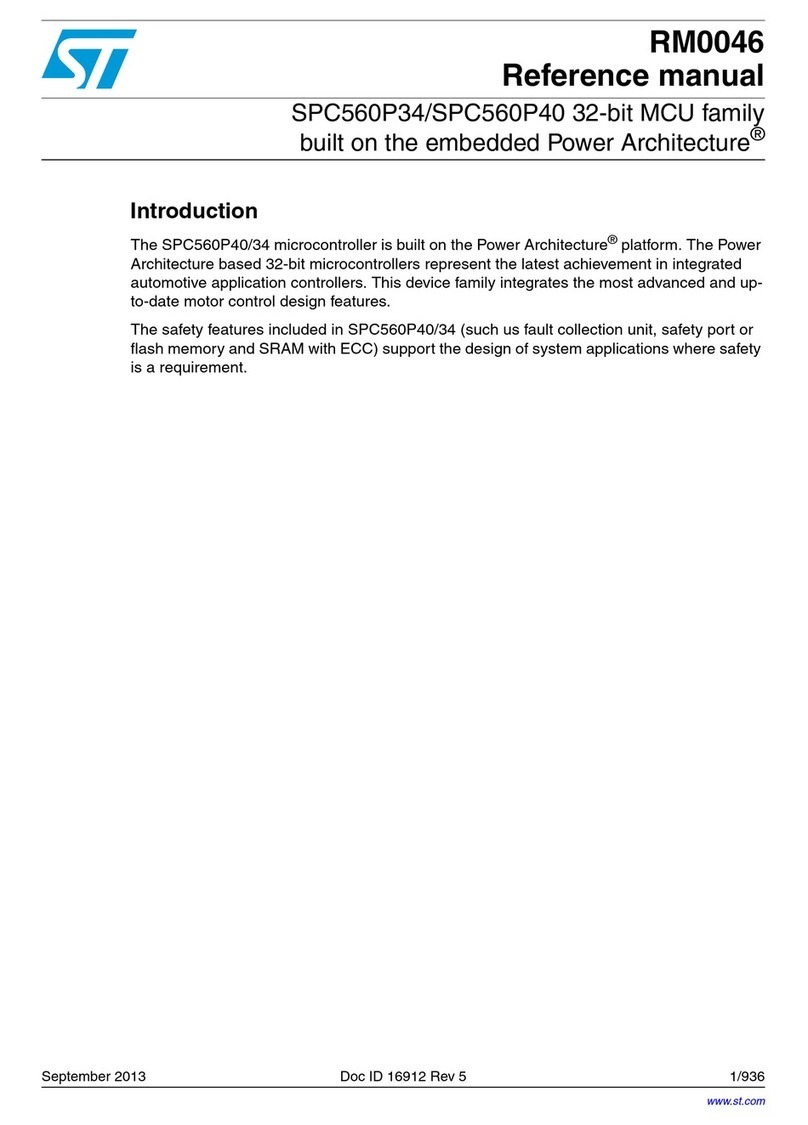Linx Technologies MDEV-GPS-SG User manual

WIRELESS MADE SIMPLE
®
Revised 07/26/11
SG Series Master Development System User’s Guide
PART # DESCRIPTION
MDEV-GPS-SG SG Series Master Development System
ORDERING INFORMATION
INTRODUCTION
The Linx SG Series RF modules offer a simple, efficient, and cost-effective method
of adding GPS capabilities to any product. The Master Development System is
intended to give a designer all the tools necessary to correctly incorporate the SG
Series into an end product. The development boards themselves serve several
important functions:
• Rapid Module Evaluation - The boards allow the performance of the Linx SG
Series modules to be evaluated quickly in a user’s environment.
• Design Benchmark - During the design process of your product, the boards
provide a known benchmark against which the performance of your own design
may be judged.
• Application Development - An on-board prototyping area is provided to allow a
designer to develop applications directly on the development board. All signal
lines are available on a header for easy connection to the designer’s circuits.
The Master Development System includes 1 assembled development board, 2 SG
Series receivers*, one SH Series antenna, 4 AAA batteries, and full documentation.
*One part is soldered to the board, one extra is for use on your first prototype board.

Page 2
SG SERIES RECEIVER DEVELOPMENT BOARD
1. Four AAA Batteries
2. DC Power Jack
3. Power Switch
4. Voltage Regulator
5. USB Interface Module
6. Prototype Area
7. Break-Out Header
8. SG Series Receiver Daughter Board
9. CR2032 Backup Battery (on the back)
10. OLED Display
11. OLED Display Power Switch
TROUBLESHOOTING
If the board fails to work out of the box, then try the following:
• Check the batteries to make sure they are not dead.
• Check to make sure that the power switch is in the correct position.
• Make sure that the jumper is set correctly.
If all of these appear to be in order, please call 800-736-6677 or e-mail
1
2
7
3
4
5
6
8
9
11
10
Figure 1: SG Series Receiver Development Board

Page 3
INITIAL SETUP
Unpack the development system and install the AAA and coin-cell batteries.
Connect the external GPS antenna. The power switch can select between the
battery pack / DC power jack or USB if the board is plugged into a USB bus. To
use the display, turn the OLED display power switch on. The development board
is now ready for use. After turning on the power, the module will determine its
current position. Please note, the time required for an initial fix or after long
periods of storage will be considerably greater than in subsequent operation.
Please refer to the module’s data guide for complete information regarding time-
to-first-fix (TTFF). To protect the display and extend its life, turn the display off
before turning the board off.
THE PROTOTYPING AREA
In addition to its evaluation functions, the board may also be used for actual
product development. It features a prototyping area to facilitate the addition of
application-specific circuitry. The prototyping area contains a large area of plated
through-holes so that external circuitry can be placed on the board. The holes
are set at 0.100” on center with a 0.040” diameter, making it easy to add most
industry-standard SIP and DIP packages to the board.
External circuitry can be easily interfaced with the SG receiver through the
breakout header (J7) to the right of the prototyping area. A jumper shunt has
been provided to control the routing of data into the GPS module. By default the
jumper is set for operation with the on-board USB module. When communicating
with the GPS module using your own components this jumper shunt should be
removed. At the bottom of the prototyping area is a row connected to the 3V
power supply and at the top is a row connected to ground.
NOTE: The on-board 3-volt regulator has approximately 300mA of headroom available for
additional circuitry. If added circuitry requires a higher current, the user must add an
additional regulator to the prototype area or power the board from an external supply.
Ground Bus
+3 Volt Bus
Figure 2: The Development Board Prototyping Area

Page 4
THE GPS RECEIVER SECTION
The receiver module is mounted on a daughter board which plugs into headers
on the main development board. This daughter board has an SMA antenna
connector to allow the attachment of many different styles of GPS antennas.
On the bottom of the main board is a CR2032 coin cell battery that provides
power to the RTC and SRAM when the receiver is powered down. This allows
the receiver to start up and obtain a position fix faster. This cell will provide about
two years of operation.
THE USB SECTION
The development board features a Linx QS Series USB module for interface to
a PC. This allows the board to be used with the supplied development software
or with custom software developed by the user.
Drivers for the USB module are included on the
software CD in the kit or may be downloaded
from www.linxtechnologies.com. Additional
information on using the QS Series USB module
can also be found on the website.
The USB connection also allows the board to be
powered by the USB bus instead of batteries.
This can be convenient during development to
eliminate the need for frequent battery
replacement.
Output data from the GPS module is connected
directly to the USB module, but data into the GPS
module is split. This is to prevent data collisions
between the USB module and any circuitry added
to the prototyping area. To route serial data from
the USB module to the serial data receive line on
the GPS module, use the supplied jumper to
connect the TX USB and RX MODULE lines on
the breakout header as shown in the adjoining
diagram. Remove this jumper for use with
external circuitry. The pin marked TX DISPLAY is
for Linx use and should be left unconnected.
TX MODULE
TX USB
RX MODULE
TX DISPLAY
1PPS
RFPWRUP
EN/ON_OFF
Figure 5: Jumper Configuration
Figure 4: The USB Section
Figure 3: The Development Board GPS Receiver Section

Page 5
THE DISPLAY SECTION
The SG Series Master Development System features an OLED screen that
displays the navigation information from the GPS module. This allows the
development board to act as a stand-alone evaluation system without the need
for any additional software.
The display is driven by an on-board microcontroller located under the display.
Data from the GPS module is connected directly to this microcontroller. The
microcontroller receives data at the receiver’s default 9,600bps. If the receiver’s
baud rate is changed, it will not be able to communicate with the
microcontroller.
The display and microcontroller pull about 100mA when fully powered, so a
power switch is supplied to deactivate the display area when not in use, saving
battery life. To protect the display and extend its life, be sure to turn the display
section off before turning off the main power to the board.
MASTER DEVELOPMENT SOFTWARE
The development system is supplied with Windows-based software that
communicates with the development board through the USB module. This
software displays the information from the GPS module in the different NMEA
formats and the satellite information, signal strength, and positions are displayed
graphically. If the PC is connected to the internet, the software plots the current
location on Google Maps. Full details are in the software’s User’s Guide.
Figure 6: The Development Board Display Section
Figure 7: Master Development Software

Page 6
RECEIVER SECTION
POWER SUPPLY SECTION
HEADER SECTION
USB SECTION
B2
BATHLD-001
GND
VBACKUP
1
2
3
4
5
6
7
8
9
10
J4
HEADER 10
GND
GND
VCC
VBACKUP
1
2
3
4
5
6
7
8
9
10
J3
HEADER 10
GND
GND
TXM
RXM
EN/ON_OFF
1PPS
LED
RFPWRUP
USBDP
USBDM
GND
VCC
SUSP IND
RX IND
TX IND
485 TX DTR
CTS
RTS
DATA OUT
DATA IN
DSR
DCD
RI
TXUSB
TXM
1
2
3
4
5
6
7
89
10
11
12
13
14
15
16
U2
SDM-USB-QS
GND
GND
D3D2
GNDGND
5V 1
DAT - 2
DAT+ 3
GND 4
GSHD
5
GSHD
6
J2
USB-B
R2
220
R1
220
VCCU
+
GND
SW1
POWER SWITCH
GND
C1
220uF
GND
VCC
D1
DIODE400
J1
PWRJACK
GND
B1
BAT-AA-4
VCCU
GND
1
Vout2
Vin 3
U1
VREG-3V
1
2
3
4
5
6
7
J7
HEADER 7
TXUSB
TXM
RXM
TXDISP
EN/ON_OFF
1PPS
RFPWRUP
+
C9
10uF
VCC
GND

Page 7
DISPLAY SECTION
5
2
4
3
1VIN
GND
EN
FB
SW
U3
MIC2288
C3
10uF
L1
10uH
R3
47.5k
R4
5k
C2
2.2uF
D4
GND
GND
GND
VCC13VCC
C4
0.1uFEN
+
1
2
3
4
5
6
7
8
9
10
11
12
13
14
15
16
17
18
19
20
21
22
23
24
25
26
27
28
29
30
J5
HEADER 30
GND
VCC13
C5
4.7uF
D7
D6
D5
D4
D3
D2
D1
D0
E/RD#
R/W#
BS0
BS1
CS#
D/C#
RES#
GPIO1
GPIO0
R5
560k
C6
1uF
VCC
VCC GND
GND
GND
GND
GND
C7
0.1uF
GND
D5
D6
R6
50
GND GND
VCC
VCC
VCOMH
VDDIO
VSL
IREF
VDD
VCI
VSS
+
D4
D3
D2
D1
D0
E/RD#
R/W#
VCC
C8
10uF
GND
EN
D/C#
AVSS
VSS
VDD
VDD
VSS
PMD5/RE5
PMD6/RE6
PMD7/RE7
PMA5/SCK2/CN8/RG6
PMA4/SDI2/CN9/RG7
PMA3/SDO2/CN10/RG8
MCLR
PMA2/SS2/CN11/RG9
VSS
VDD
C1IN+/AN5/CN7/RB5
C1IN-/AN4/CN6/RB4
C2IN+/AN3/CN5/RB3
C2IN-/AN2/SS1/CN4/RB2
PGC1/EMUC1/VREF-/AN1/CN3/RB1
PGD1/EMUD1/PMA6/VREF+/AN0/CN2/RB0
PGC2/EMUC2/AN6/OCFA/RB6
PGD2/EMUD2/AN7/RB7
AVDD
U2CTS/C1OUT/AN8/RB8
PMA7/C2OUT/AN9/RB9
TMS/PMA13/CVREF/AN10/RB10
TDO/PMA12/AN11/RB11
TCK/PMA11/AN12/RB12
TDI/PMA10/AN13/RB13
PMA1/U2RTS/BCLK2/AN14/RB14
PMA0/AN15/OCFB/CN12/RB15
PMA9/U2RX/SDA2/CN17/RF4
PMA8/U2TX/SCL2/CN18/RF5
U1TX/SDO1/RF3
U1RX/SDI1/RF2
U1RTS/BCLK1/SCK1/INT0/RF6
SDA1/RG3
SCL1/RG2
OSC1/CLKI/RC12
OSC2/CLKO/RC15
IC1/RTCC/INT1/RD8
IC2/U1CTS/INT2/RD9
IC3/PMCS2/INT3/RD10
IC4/PMCS1/INT4/RD11
OC1/RD0
SOSCI/CN1/RC13
SOSC0/T1CK/CN0/RC14
OC2/RD1 49
OC3/RD2 50
PMBE/OC4/RD351
PMWR/OC5/IC5/CN13/RD4 52
PMRD/CN14/RD5 53
CN15/RD6 54
CN16/RD7 55
VCAP/VDDCORE 56
ENVREG 57
RF0 58
RF1 59
PMD0/RE0 60
PMD1/RE1 61
PMD2/RE2 62
PMD3/RE363
PMD4/RE4 64
U4
PIC24F128GA006
SW2
POWER SWITCH
VCC
1
2
3
4
5
6
7
8
9
10
11
12
13
14
15
16
17
18
19
20
21
22
23
24
25
26
27
28
29
30
31
32
33
34
35
36
37
38
39
40
41
42
43
44
45
46
47
48
D7
D6
D5
CS#
RES#
GND
GND GND
GND
VCC
VCCVCC
VCC
VPP
PGC
PGD TXDISP
TXM
SW3
GND
VCC
GND

LINX TECHNOLOGIES, INC.
159 ORT LANE
MERLIN, OR 97532
PHONE: (541) 471-6256
FAX: (541) 471-6251
www.linxtechnologies.com
U.S. CORPORATE HEADQUARTERS
WIRELESS MADE SIMPLE
®
Linx Technologies is continually striving to improve the quality and function of its products. For this reason,
we reserve the right to make changes to our products without notice. The information contained in this
Overview Guide is believed to be accurate as of the time of publication. Specifications are based on
representative lot samples. Values may vary from lot-to-lot and are not guaranteed. "Typical" parameters can
and do vary over lots and application. Linx Technologies makes no guarantee, warranty, or representation
regarding the suitability of any product for use in any specific application. It is the customer's responsibility
to verify the suitability of the part for the intended application. NO LINX PRODUCT IS INTENDED FOR USE
IN ANY APPLICATION WHERE THE SAFETY OF LIFE OR PROPERTY IS AT RISK.
Linx Technologies DISCLAIMS ALL WARRANTIES OF MERCHANTABILITY AND FITNESS FOR A
PARTICULAR PURPOSE. IN NO EVENT SHALL LINX TECHNOLOGIES BE LIABLE FOR ANY OF
CUSTOMER'S INCIDENTAL OR CONSEQUENTIAL DAMAGES ARISING IN ANY WAY FROM ANY DEFECTIVE
OR NON-CONFORMING PRODUCTS OR FOR ANY OTHER BREACH OF CONTRACT BY LINX
TECHNOLOGIES. The limitations on Linx Technologies' liability are applicable to any and all claims or
theories of recovery asserted by Customer, including, without limitation, breach of contract, breach of
warranty, strict liability, or negligence. Customer assumes all liability (including, without limitation, liability
for injury to person or property, economic loss, or business interruption) for all claims, including claims
from third parties, arising from the use of the Products. The Customer will indemnify, defend, protect, and
hold harmless Linx Technologies and its officers, employees, subsidiaries, affiliates, distributors, and
representatives from and against all claims, damages, actions, suits, proceedings, demands, assessments,
adjustments, costs, and expenses incurred by Linx Technologies as a result of or arising from any Products
sold by Linx Technologies to Customer. Under no conditions will Linx Technologies be responsible for
losses arising from the use or failure of the device in any application, other than the repair, replacement, or
refund limited to the original product purchase price. Devices described in this publication may contain
proprietary, patented, or copyrighted techniques, components, or materials. Under no circumstances shall
any user be conveyed any license or right to the use or ownership of such items.
Disclaimer
© 2009 by Linx Technologies, Inc. The stylized Linx logo,
Linx, “Wireless Made Simple”, CipherLinx, and the stylized
CL logo are the trademarks of Linx Technologies, Inc.
Printed in U.S.A.
This manual suits for next models
1
Table of contents
Other Linx Technologies Microcontroller manuals

Linx Technologies
Linx Technologies QS Series User manual

Linx Technologies
Linx Technologies HumDT Series User manual

Linx Technologies
Linx Technologies NT Series User manual
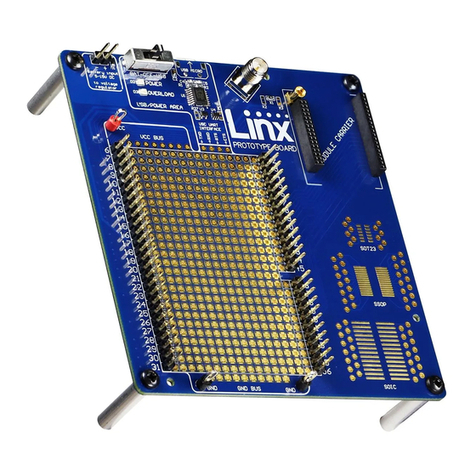
Linx Technologies
Linx Technologies TT Series User manual

Linx Technologies
Linx Technologies HumDT Series Service manual

Linx Technologies
Linx Technologies TT Series User manual
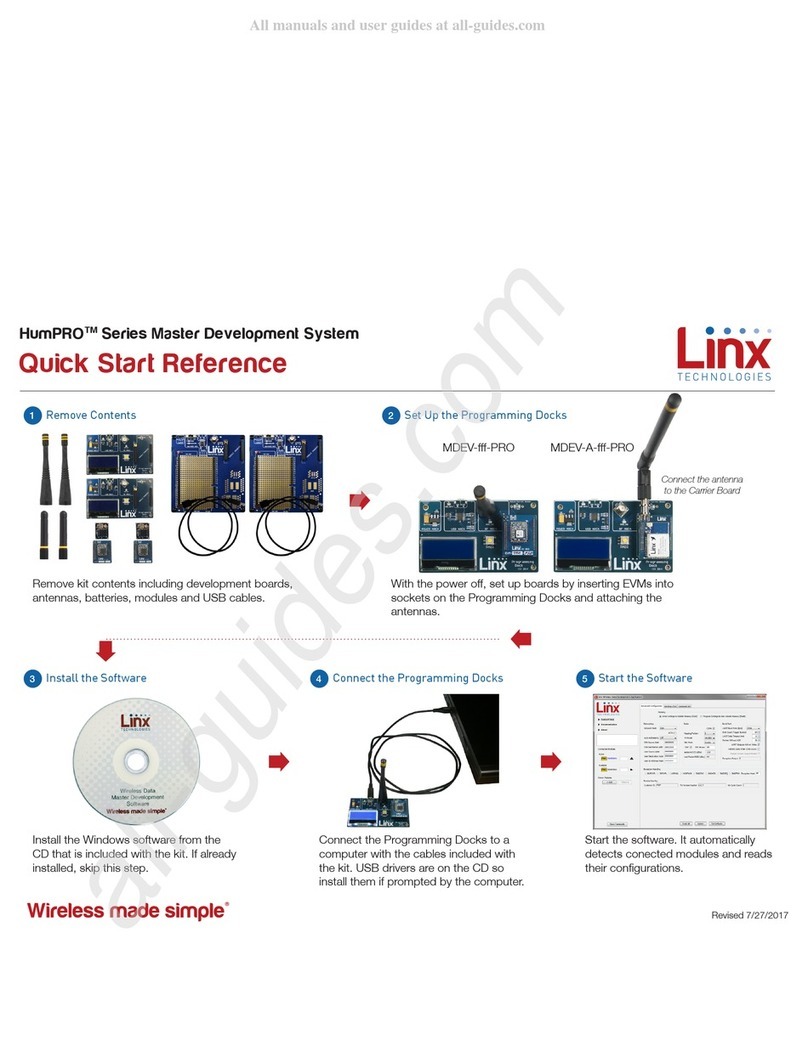
Linx Technologies
Linx Technologies HumPRO Series Service manual

